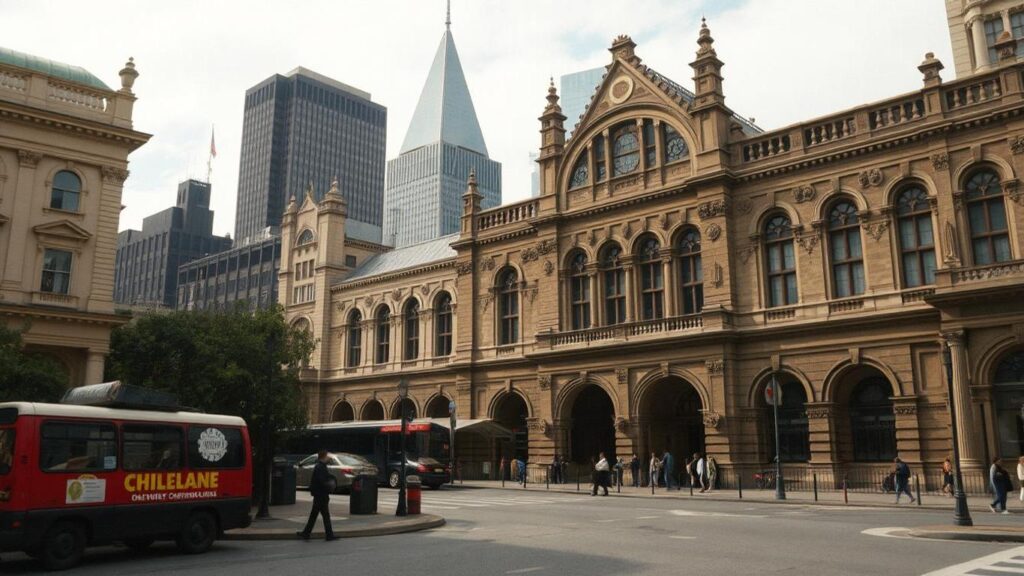Melbourne, the vibrant capital of Victoria, is a city known for its rich history, cultural diversity, and stunning architecture. A visit to Melbourne is incomplete without exploring its fascinating heritage sites, which tell the story of its development from a small colonial outpost to a bustling metropolis. Whether you’re planning to tour the city’s iconic landmarks or explore its lesser-known gems, a chauffeur service Melbourne can help you navigate the city’s streets with ease.
Early Beginnings: Melbourne’s Colonial Foundation
Melbourne’s history dates back to the early 19th century, when it was founded by European settlers in 1835. The land had long been inhabited by the Wurundjeri people of the Kulin Nation, who called the area home for over 40,000 years before British settlers arrived. The city was initially established as a farming settlement, but the discovery of gold in 1851 in Victoria transformed it into one of the wealthiest cities in the world during the Gold Rush era.
The influx of fortune seekers from around the globe brought about rapid growth and urban development, laying the foundation for the grand buildings and infrastructure that still define Melbourne today.
Gold Rush Boom and the Development of the City
The Gold Rush dramatically changed Melbourne’s fortunes, turning it into a bustling economic hub. Many of the city’s most iconic buildings were constructed during this time, as the newfound wealth from gold was channeled into infrastructure and the arts. Some of Melbourne’s most famous heritage sites from this period include the Royal Exhibition Building, Parliament House, and the Melbourne General Post Office.
The Royal Exhibition Building, completed in 1880, remains one of the city’s most significant historical landmarks. This UNESCO World Heritage-listed site was built to host the Melbourne International Exhibition and has since become a symbol of Melbourne’s rich architectural and cultural history. Nearby, the Carlton Gardens provide a peaceful retreat for visitors, surrounded by the grandeur of this iconic building.
The Victorian Era: Flourishing Architecture
During the late 19th century, Melbourne experienced what is now known as the “Marvellous Melbourne” era. This period saw the construction of grand public buildings, fine houses, and the development of civic infrastructure that still stand today. Some of the most notable Victorian-era buildings include the State Library of Victoria, St. Patrick’s Cathedral, and the Old Treasury Building.
The Old Treasury Building, designed by architect JJ Clark, is one of the finest examples of 19th-century Renaissance Revival architecture. It once served as the city’s treasury and now houses a museum that provides an in-depth look at Melbourne’s Gold Rush era.
Similarly, St. Patrick’s Cathedral is a towering Gothic Revival structure that remains one of the city’s most impressive architectural achievements. Built over the course of 40 years, its grand spires and beautiful stained-glass windows reflect the city’s growth during the Victorian period.
Federation and the Birth of Modern Melbourne
The turn of the 20th century brought with it the Federation of Australia, and Melbourne served as the nation’s capital from 1901 until 1927, when Canberra took over as the seat of government. During this period, Melbourne continued to grow and solidify its place as a cultural and political center. Several important heritage sites from this era, such as the Shrine of Remembrance, were constructed to commemorate Australia’s involvement in the First World War.
The Shrine of Remembrance, built in 1934, stands as one of Melbourne’s most iconic monuments. Located in the King’s Domain gardens, it serves as a solemn reminder of the sacrifices made by Australian soldiers in various conflicts. Visitors can climb to the top of the shrine for a panoramic view of the city, a fitting way to reflect on Melbourne’s past and its place in modern Australia.
Melbourne’s Post-War Transformation
After the Second World War, Melbourne underwent another period of transformation, largely due to an influx of European immigrants. This wave of immigration brought with it diverse cultures, traditions, and cuisines that have made Melbourne the multicultural city it is today. Many of the post-war immigrants settled in inner-city suburbs such as Carlton and Fitzroy, areas that are now known for their vibrant arts scene and historic buildings.
One must-visit heritage site from this era is Federation Square, a modern architectural marvel that serves as a hub for art, culture, and public events. Federation Square, located next to the iconic Flinders Street Station, offers a mix of old and new, with its modern design contrasting the nearby historical buildings.
Heritage Walks: Exploring Melbourne’s Past
Walking through Melbourne’s central business district (CBD) and inner suburbs offers a window into the city’s rich history. Guided heritage walks are a popular way for both locals and visitors to experience Melbourne’s diverse architectural and cultural history. The Melbourne Historic Trail takes you past some of the city’s most important historical sites, including Captain Cook’s Cottage in the Fitzroy Gardens, a symbol of Melbourne’s British colonial roots.
Another popular trail is the Melbourne Laneways Tour, which offers a glimpse into the city’s famous street art culture and hidden cafes. While the laneways are now a major tourist attraction, many were originally built to serve the city’s emerging working-class population during the 19th century.
Conclusion: Melbourne’s Heritage as a Living History
Melbourne’s heritage sites offer a captivating look at the city’s transformation over time, from its early days as a Gold Rush town to its emergence as a vibrant modern metropolis. The rich cultural and architectural heritage of Melbourne is not just preserved in museums and monuments but is very much a part of daily life, with historical sites seamlessly integrated into the city’s modern landscape. Exploring Melbourne’s heritage is not just about learning its history but about experiencing how the past shapes the present in one of the world’s most liveable cities.



